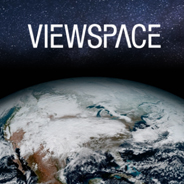What in the Universe: Galaxy Interaction
Video Player
Video Versions
What cosmic phenomena is captured in this image?
Produced by the Space Telescope Science Institute’s Office of Public Outreach in collaboration with NASA’s Universe of Learning partners: Caltech/IPAC, NASA Jet Propulsion Laboratory, Smithsonian Astrophysical Observatory, and Sonoma State University.
- Primary image of Arp 142: NASA-ESA/STScI/JPL-Caltech
- Video of Arp 142: NASA/ESA, G. Bacon, L. Frattare, Z. Levay, and F. Summers
- Elliptical galaxy IC 2006: NASA/ESA, M. Carollo
Written by Leah Ramsay
Designed by Leah Hustak and Dani Player
Editorial and design input from Dr. Quyen Hart, Yesenia Pérez, and Margaret W. Carruthers
Designed by Leah Hustak and Dani Player
Editorial and design input from Dr. Quyen Hart, Yesenia Pérez, and Margaret W. Carruthers
Music courtesy of Music for Non-Profits
(SPEECH)
[NO SPEECH]
(DESCRIPTION)
A series of space-related graphics. Text, What In The Universe?
A series of space-related graphics. Text, What In The Universe?
(SPEECH)
[MUSIC PLAYING]
[MUSIC PLAYING]
(DESCRIPTION)
Feathery streaks of red against dark blue. Text, What Is Shown In This Image? A. Two galaxies interacting. B. Two comets passing each other. C. A dying star ejecting gas and dust. D. Gas and dust orbiting a black hole.
Feathery streaks of red against dark blue. Text, What Is Shown In This Image? A. Two galaxies interacting. B. Two comets passing each other. C. A dying star ejecting gas and dust. D. Gas and dust orbiting a black hole.
A highlight over answer A, two galaxies interacting
Text, Spitzer and Hubble Space Telescopes (Visible and Infrared Light) Arp 142 Hydra Constellation. Two massive galaxies interact in space, their gravity pulling at each other. Hubble Space Telescope Ultraviolet, visible, infrared light.
NGC 2936 was once a classic spiral galaxy, but its shape has been distorted by the interaction.
As the galaxy is thrown into disarray, gas collides and compresses, forming bright new stars.
NGC 2937 is an elliptical galaxy.
Its uniform appearance, lacking bright young stars and dark dust lanes, shows it is much older.
Its star-forming resources have been depleted.
Together the galaxies are catalogued as number 142 in astronomer Halton C. Arp's Atlas of Peculiar Galaxies.
Eventually the two galaxies will merge, forming one much more massive elliptical galaxy.
Most large galaxies have likely been through at least one merger in their history.

